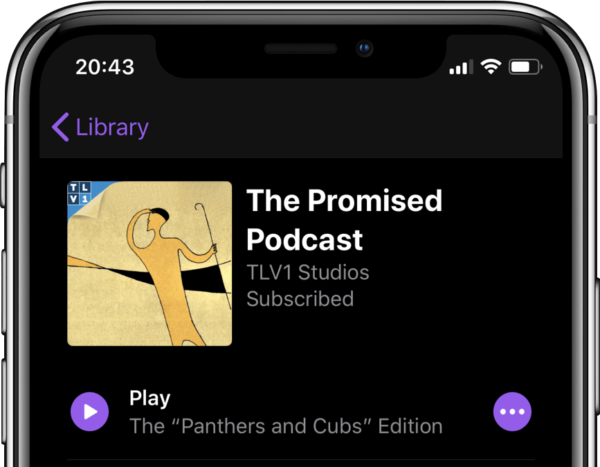Allison Kaplan Sommer, Don Futterman and Noah Efron discuss three topics of incomparable importance and end with an anecdote about something in Israel that made them smile this week.
God & Country
Are the ultra-Orthodox the big winners in Israel’s new government? Does that make the rest of us losers?
18 Years of Death, Misery and Despair: There’s an App for that Now!
A new app/site lets Israelis who fought in Israel’s long miserable war in Lebanon return virtually to the outposts where they froze and watched their friends die. But why?
Thrice the Advice!
If you’re an Israeli abroad, is it your responsibility to present the country in a good light?
Goin’ Up!
For our most unreasonably generous Patreon supporters, in our extra-special, special extra segment, we talk about what the corona-mess feels like now, as we leave lockdown and watch the numbers creep back up. (Hint: Yikes!)
All that and bright songs by Sun Tailor!
Music
Sun Tailor (aka Arnon Naor), in celebration of his show at the Yellow Submarine in J-lem, re-opening the club:
- Wake Up Now (with Saz)
- Trials & Troubles
- Shake It Off
- On Our Way
Looking for extra segments and other patron-only perks?
Find them on Patreon.





Overview
May 2020 marked the 20-year anniversary of the Israeli Defense Forces (“IDF”) withdrawal from Southern Lebanon. After the establishment of a buffer zone there in 1985 to mitigate regular and ongoing conflict, an entire generation of Israeli and Southern Lebanese soldiers spent years patrolling, protecting and fighting in that zone. To this day, many of the wounds earned on that battlefield have yet to heal. And yet, there remains no recognition of those battles—collectively, they are known only as the “Forgotten War”. This project aims to ensure that it is forgotten no more.
About the story map
The story map shows the locations of former military outposts held by the IDF and the Southern Lebanon Army (“SLA”) between 1985 and 2000 in an area known as the Security Belt / Zone. The majority of the outposts are also connected to Wikipedia values (Hebrew) and back from Wikipedia to the Map Story. Each outpost includes a brief description, an historical picture and a link to continue reading other information or content.
Development of the project included two steps:
1. Data collection – The first step was to find the geographical data of all the layers included in the map – the border line, the northern settlements, the security zone area and of course, the IDF and SLA outposts. The greater challenge was to find the geographical locations of the various outposts (most of which were destroyed 20 years ago) on current satellite images. To this end, we received assistance and guidance from many sources with tenure in the IDF and SLA who previously served in the security zone between 1985 to 2000.
2. The story map development – The second phase of the project was to design and build the 3D map and the story map. The 3D web scene enables end-users to experience the most realistic views of what soldiers could see from the outposts and virtually visit all areas.
A memorial of a different kind
For the first time, families who lost their dear ones can virtually visit and understand where their beloved ones served. The maps story enables people to experience and see the places where an entire generation of soldiers served through an interactive, 3D and immersive experience. For the first time, the general public can understand the unique character of this conflict and appreciate the many facets of its physical terrain. Bereaved families are also able to see where their loved ones fell in battle and learn about their journey by jumping or hovering safely and easily from one post to another. Moreover, the map story serves as an asset for documenting an important piece of a heretofore inaccessible military history, and a tool for educating young generations about the history of this area.
In the future
Development of this tool and an expansion of its capabilities is ongoing. An example of a recently added function is the ability to upload pictures based on locations / outposts from people who served there during the conflict. Also, we hope that the project will continue to evolve and be used for educational purposes to teach future generations.
About the authors behind the 20 Years After Project
Dr. Ori Gudes is a Senior Research Fellow at the University of Canberra and a Lecturer at the University of New South Wales, Australia. Dr. Gudes is also a veteran of the IDF who served at the Pumpkin Outpost in Southern Lebanon from 1995 to 1996. Michael Visner is doing his master’s in Urban Analytics at the University of New South Wales, Australia.
***The project was supported by Systematics ltd. (ESRI Israel) and the IDF mapping unit
Video (English):
https://vimeo.com/428657260